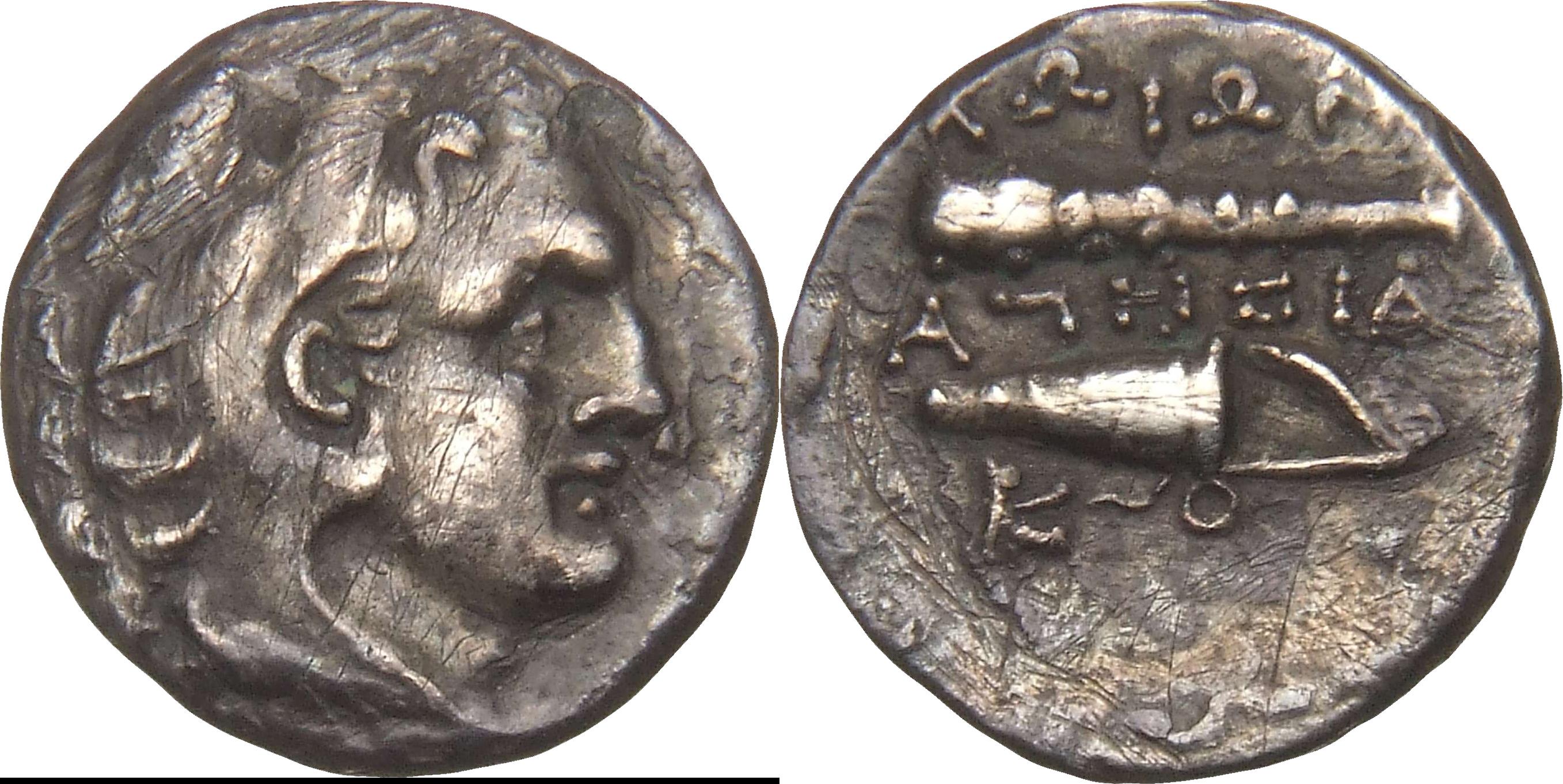Cos, silver, hemidrachms (Heracles/club & bowcase) (201-200 BCE)
From SILVER
201 BCE - 200 BCE Silver 692 kg
Description
| ObverseInscription or printing placed on the obverse.: | Head of Heracles right, wearing Nemean lion skin headdress. |
| ReverseInscription or printing placed on the reverse.: | KΩΙΟΝ or ΚΩΙΩΝ (Greek).Club and bow in case |
Mint and issuing power
| MintIdentifies the place of manufacture or issue of a numismatic object.: | Cos | Ancient regionAncient region.: | Caria (islands) | Modern countryModern country: Greece | AuthorityIdentifies the issuing power. The authority can be "pretended" when the name or the portrait of X is on the coin but he/she was not the issuing power. It can also be "uncertain" when there is no mention of X on the coin but he/she was the issuing power according to the historical sources: |
Chronology
| FromIdentifies the initial date in a range assigned in a numismatic context. | 201 BCE | toIdentifies the final date in a range assigned in a numismatic context.. | 200 BCE | PeriodTime period of the numismatic object.: Hellenistic 323-30 BC |
Physical description
| MetalThe physical material (usually metal) from which an object is made.: | Silver |
Median weightMedian of the weights of numismatic objects (in grams). in grams | 1.40 | DenominationTerm indicating the value of a numismatic object. Examples: tetradrachm, chalkous, denarius.: | hemidrachm |
StandardStandard.: |
Image

Cos_hemidrachm_heracles_club_&_bowcase.jpg [1]
References
| Die study referencePublication of the study: | Höghammar 20071Höghammar 2007, p. 80, pl. 16 (Issue A). | ||
| Coin series referenceReference to coin series study: | |||
| Coin series web referenceCoin series web references: | |||
Reverse dies distribution
no distribution is available
Quantification
| Number of obversesNumber of obverse dies. ᵖ (o) | 7 | Number of singletons (o1)The number of singleton coins. ᵖ | 5 |
| Number of reverse diesNumber of reverse dies. (r) | 7 | Number of coinsNumber of coins. (n) | 9 |
| Coins per obverse dieNumber of coins per obverse die. (n/o) | 1.29 | Coins per reverse dieNumber of coins per reverse die. (n/r) | 1.29 |
| Reverse per obverse ratioRatio of obverse dies divided by reverse dies. (r/o) | 1 | Percentage of singletons (o1)number of coins (n) divided by the number of singletons (o1) ᵖ | 71.43 % |
| Original number of dies (O) (Carter 1983 formula)The estimation of the number of coins according to Carter 1983 ᵖ | 24.73 | Coins struck if 20,000 as average productivity per dieCoins made if the average productivity for obverses (according to Carter) is 20,000. ᵖ | 494,600 |
| Original number of dies (O) (Esty 2011 formula)The estimation of the number of coins according to the singleton formula in Esty 2011 ᵖ (O) | 31.5 | Survival rate if 20,000 as average productivity per dieSurvival rate if average productivity is 20,000. ᵖ | 0.00002 |
| Coverage (o = % of O) (Esty 1984 formula)Esty 1984 - coverage (% of O) ᵖ (o = % of O) | 44.44% | Die productivity if survival rate 1/2,000Average productivity if survival rate is 1/2,000. ᵖ | 727.86 |
| Weight of silver (in kg) if 20,000 coins per die (O = Carter formula)Carter 1983 * Median weight * 20000 (*10 if gold or electrum) ᵖ | 692 kg <br /> 692 kg | Die productivity if survival rate 1/5,000Average productivity if survival rate is 1/5,000. ᵖ | 1,819.65 |
Remarks
Most likely one single workstation
References
- ^ Höghammar, Kerstin (2007), "A Group of Koan Issues from c. 200 BC", Numismatic Chronicle 167, p. 81-82, pl. 16-17 (Issue D).